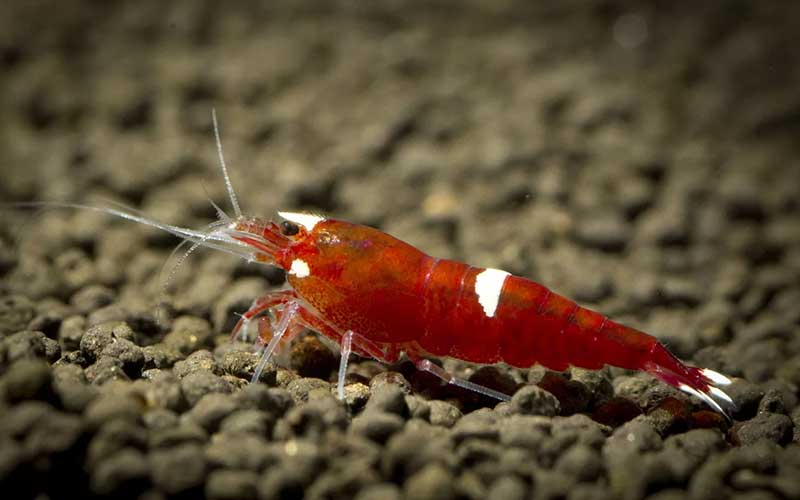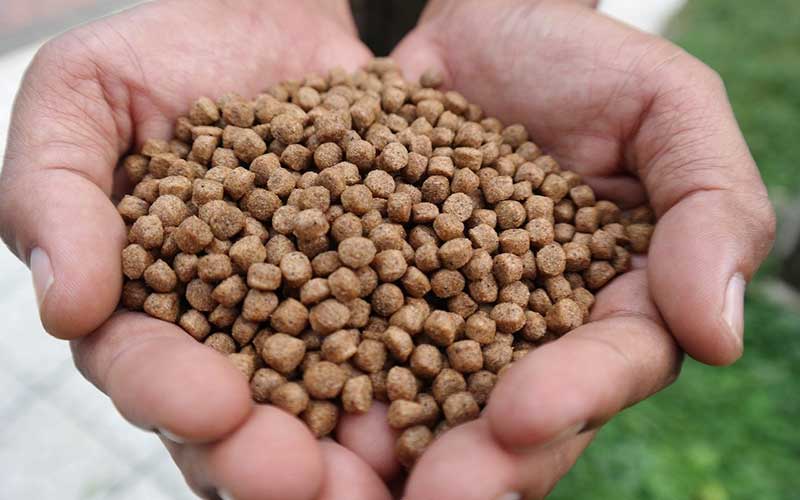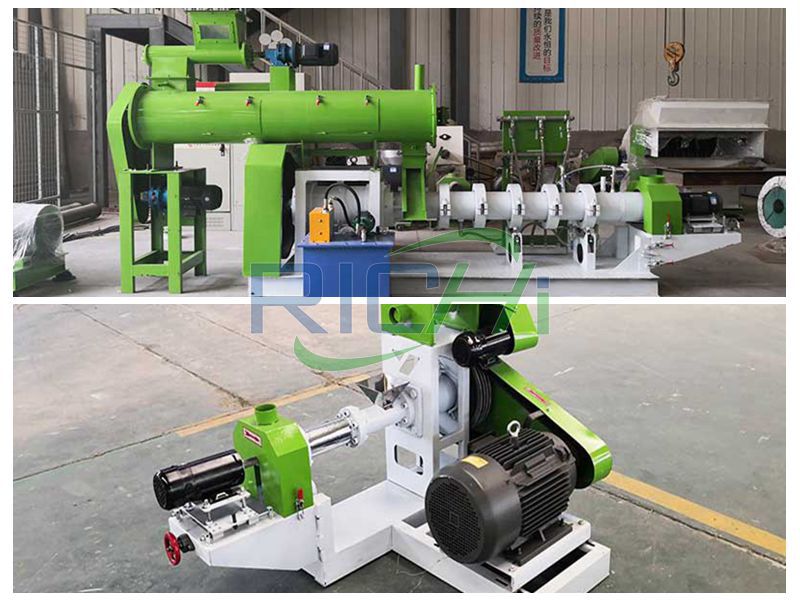
Hotline:+86 18574103366
| |KINDLY REMINDER: If you are interested in our products, Please get in contact with us

The successful management of commercial aquafeeds for shrimp requires understanding the aquatic environment and the availability and enhancement of natural food production, feed handling and storage, management of pond water and bottom, feed application method and feeding regime. The best shrimp feed in the world will yield meager results if it is not handled, stored and used properly. Overfeeding will cause water pollution and relegate an expensive, carefully formulated and produced feed to the role of a simple fertilizer. Management of commercial aquafeeds is a sequential process, only as strong as its weakest link.
Different penaeid species have different feeding behavior, as has been reported in the literature by various authors and shrimp species, including Pacific white shrimp (Litopenaeus vannamei), Pacific blue shrimp (L. stylirostris), black tiger shrimp (Penaeus monodon) and other species. Some species and sizes can exhibit a more aggressive feeding behavior than others, and behavior can also be affected by environmental conditions, time of day/night, availability of natural food, shrimp density and other variables. All these should be considered to better assess and understand shrimp feeding behavior for management purposes, and relevant information developed for each farm for more efficient feed management practices.
Regarding the water quality of production systems, the most important parameters are temperature, dissolved oxygen, pH and salinity. Shrimp cannot regulate their internal temperature and the environment determines it, which affects several physiological processes, including metabolic rates and feeding.
The quality of commercial aquafeed used is very important. Shrimp eat to fulfill their nutritional and energy needs, and if the feed they consume does not have enough energy or nutrients, their feeding activity will increase. Feed attractability and palatability are also important factors.
A formulated aquafeed must meet several criteria. Each farm develops its own feed quality requirements, and there are several quality criteria used to evaluate commercial shrimp aquafeeds diets, including pellet size, uniformity of appearance, physical integrity and density, humidity, protein and lipid content, water stability, attractability and smell. The aquafeed selected must fulfill the known nutritional requirements of the targeted species. It must be fresh and free of mycotoxins and pesticides, and have low pollution potential.
The feed should have attractants and natural foods to improve feed palatability and promptly stimulate its consumption. Various attractants are commonly used in shrimp feeds to improve feed perception and detection by the animals. Attractants can improve feed perception and reduce response times (onset of feeding activity) by as much as 50 percent when compared to feeds without attractants.
The addition of enzymes and highly digestible ingredients in feed formulation increases nutrient assimilation and reduces excreted materials. Pellet size must be appropriate to shrimp size, and the feed must be sufficiently stable after immersion in water to prevent rapid deterioration, critical nutrient loss and wastage. Aquafeeds can lose nutrients rapidly after immersion, so it is important that feeds have adequate stability and attractability after immersion in water to maximize nutrient uptake by shrimp and to minimize wastage.
Feed management at a shrimp production facility should start upon arrival of a feed shipment. Adequate handling and storage of feed, and proper quality control have immediate and significant consequences for shrimp production. Poor storage and handling of feeds will result in product deterioration, reduced feed attractability and palatability, possible nutritional deficiencies and disease outbreaks, and reduced growth rates and overall production. Upon reception of a feed batch, a few randomly selected bags should be examined for physical integrity. Bags should be weighed and inspected for signs that they have been opened or broken into, and then sealed or sewn closed again.

Shrimp Commercial Aquafeed
Aquafeeds are made of highly perishable ingredients, and it is critical to handle and store them properly until used. Most feed manufacturers provide general guidelines for handling and storage of shrimp artificial feeds. These include:
There can be various problems associated with handling and storing aquafeeds, including nutrient losses, growth of micro‑organisms, insect and rodent infestations, and rancidity. Nutrient losses occur when essential nutrients like some vitamins degrade as feed ages, particularly under storage conditions of high ambient humidity and temperature. Feed manufacturers can incorporate high levels of vitamins to allow for these losses, and also employ stabilized, breakdown‑resistant forms of vitamins. Several bacteria and mycotoxin‑producing molds can develop under warm and moist conditions prevalent in shrimp farming areas.
Above we have learned about the influencing factors of shrimp feed consumption, the selection, processing and storage of commercial shrimp feed pellets. But we still have an important step that we haven't introduced-that is how to make shrimp feed. This is not only for shrimp feed plants and aquatic feed plants. It is more important for large fish and shrimp farms. We know that the price of buying shrimp feed is very expensive. If we can produce shrimp feed by ourselves, the cost of feed will be greatly reduced. In addition, the shrimp feed pellets we produce can be sold to those who need it, and profit can also be realized!
There are generally two forms of raw materials used in feed mills: one is powder, which does not need to be coarsely crushed. The other is pellets, which are materials that need to be coarsely crushed. Primary coarse pulverization is the pretreatment process of ultrafine pulverization in aquatic feed processing. Its main purpose is to reduce the particle size difference and variation range of materials, improve the working condition of the ultrafine grinder, and increase the working efficiency and guarantee of the ultrafine grinder Stable product quality.
The first batch of ingredients is mainly the preparation of popular raw materials, that is, the preparation of relatively large materials in the formula. This process is mainly completed by the electronic batching scale. The first batching and mixing is also the pre-treatment process of ultra-fine pulverization, which is mainly to reduce the variation range of material particle size, improve the working condition of the pulverizer and increase the working efficiency of the pulverizer, and ensure the quality of the product.
Due to the low food intake of aquatic animals, short digestive tract, and poor digestion capacity, aquatic feed requires a very fine particle size to increase the surface area of the feed, increase the contact area between the digestive juice of aquatic animals and the feed, and increase the feed of aquatic animals. The digestibility and feed remuneration; at the same time, due to the low intake of aquatic animals, the mixing uniformity of the feed is required to be reflected in a smaller range, which also requires the aquatic feed to have a finer particle size. For example, all the shrimp feed must pass the 40-mesh analytical sieve, and the 60-mesh sieve must be less than 5%, so the micro-grinding process must be used. Various raw materials enter the secondary mixer after secondary batching. There is an artificial feeding port above the secondary mixer, which is mainly used for adding trace additives. After the material is pulverized and mixed with the secondary ingredients, it enters the subsequent process---expansion granulation process.
Shrimp feed pellet extruder maker is needed for shrimp feed extruder. In the extrusion process, the material actually goes through a cooking process under high temperature, high humidity and high pressure. In this process, the physical and chemical properties of the material change strongly, and the moment the material is extruded from the die hole, because the pressure suddenly drops from high pressure to about 100kPa, the water in the feed is immediately transformed from liquid to gas and is emitted from the feed. So that the material is expanded to form the so-called expanded feed. Because this feed not only has the advantages of general hard pellet feed: good palatability, avoids automatic classification of products, is convenient for transportation, helps digestion, reduces waste in the feeding process, etc., but also has unique advantages: starch in the feed The gelatinization degree is high, the protein is easier to digest, and the utilization rate of the animal's feed is improved; it has excellent floatability, which is convenient for observing the feeding situation of fish and can control water pollution to the greatest extent. These are also the main reasons why extruded feed is widely used.

After the material is extruded by the extruder, it will form squishy particles (with a moisture content of 25% to 30%). At this time, it is best to use pneumatic conveying instead of using a hoist to lift. Due to the high moisture content of the material conveyed by pneumatic force, it must be dried in the dryer to reduce the moisture of the material to about 13%. After the materials are dried, they enter the external spraying system. The external spraying of particles is mainly to meet the energy requirements of fish and reduce the loss of heat-sensitive substances during processing. Nutrients that should not be added in the previous process can be supplemented by spraying, and at the same time it can improve the palatability of the feed and reduce the powder content. The best working temperature for this process is around 80°C. After the material passes through the external spraying system, it can enter the countercurrent cooler for cooling.
The cooled material is lifted by a hoist and then crushed into the plane rotary screen for classification. The grading sieve is generally a two-layer sieve, and the material on the lower sieve is the finished product, which can be directly entered into the finished product warehouse, and then weighed and packaged.